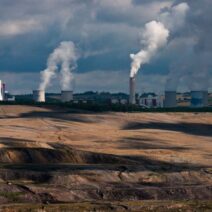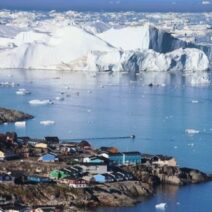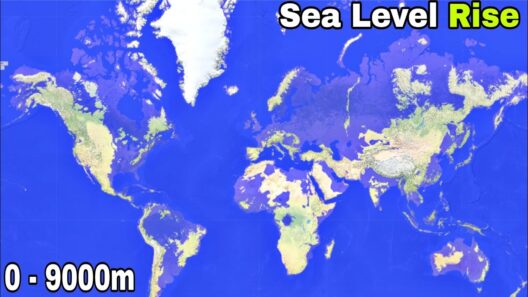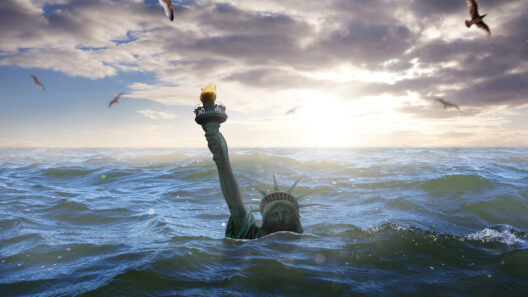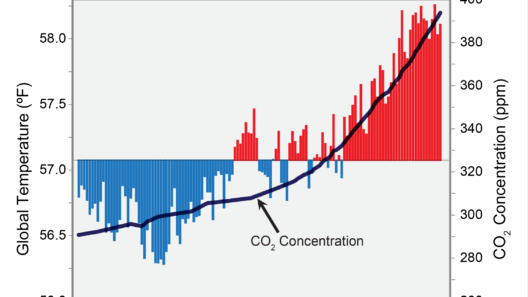In recent years, rising sea levels have become a pressing concern, captivating the attention of scientists, policymakers, and everyday individuals. Have you ever stood on the shoreline, gazing at the horizon, and imagined what life would be like if the oceans encroached upon the land? It poses a playful challenge to consider: what if the very beaches we cherish turned into memories? The implications of rising sea levels extend far beyond altering a picturesque vista. They herald an era of profound ecological, economic, and societal upheaval that demands our attention.
To comprehend the multifaceted ramifications of rising oceans, we must first examine the driving forces behind this phenomenon. Primarily, two culprits emerge from this oceanic quandary: thermal expansion and the melting of polar ice. As global temperatures rise, water molecules expand, causing ocean waters to swell. Concurrently, glaciers and ice caps succumb to climate change, contributing to the relentless rise. This dual impact inevitably presents an array of challenges across diverse landscapes.
The repercussions of this ascent manifest vividly in coastal communities, where inhabitants face existential threats to their homes. As the oceans continue their relentless march inland, low-lying areas experience an increase in both flooding and storm surges. What used to be livable, thriving neighborhoods could become ghost towns enveloped by water. Displacement of populations is not a distant phenomenon but a creeping reality. As communities grapple with loss, the question arises: where do these individuals go? The fate of millions rests on the shoulders of both local and global leaders, who must address not only the immediate impacts on real estate but also the intertwined socio-economic challenges that ensue.
Beyond physical displacement, rising sea levels also threaten to obliterate invaluable ecosystems. Coastal wetlands, mangroves, and coral reefs serve as crucial buffers that protect inland areas from storms and flooding. They are vital habitats for myriad species, ensuring biodiversity flourishes. Yet, as salty seawater infiltrates these ecosystems, delicate life forms struggle to survive. The loss of these natural barriers exacerbates erosion and diminishes the resilience of coastal regions to withstand extreme weather events. Could it be that our failure to protect these ecosystems could lead to irreparable harm? The grim reality is that such losses could spell disaster for our planet’s biological tapestry.
Moreover, the economic implications of rising sea levels cannot be overstated. Coastal cities, the lifeblood of trade and commerce, could find their infrastructure compromised, leading to spiraling costs for repairs and adaptations. The insurance industry will likely face astronomical claims, ultimately cascading into higher premiums for home and business owners. Businesses and livelihoods tethered to maritime industries—fishing, tourism, and shipping—may find themselves reeling. The question looms large: how sustainably can we keep these economies afloat? If sea levels rise too high, the financial repercussions might drown sectors critical to our livelihood.
Nevertheless, an often-overlooked aspect of rising seas is their role in exacerbating social inequities. Vulnerable populations, particularly in developing nations, will bear the brunt of these climatic changes. Many individuals in these regions live below the poverty line, lacking the resources or infrastructure to adapt effectively. With governmental support stretched thin, the added strain from rising sea levels may deepen existing disparities. Will society stand idly by while these inequities deepen? Or will we rally together to forge comprehensive strategies that account for the most susceptible among us?
To address the multifarious challenges stemmed from rising sea levels, proactive measures must be taken. Mitigation strategies, including the reduction of greenhouse gas emissions, can help slow climatic fluctuations. Restoration and conservation of coastal ecosystems can aid in bolstering natural defenses against surging waters. Urban planning must adapt to the realities of a changing climate, favoring resilient designs that embrace green infrastructure. Community engagement will be paramount in devising locally informed strategies to protect vulnerable populations.
While the rising ocean may seem like an insurmountable challenge, it also offers an opportunity for collective action. The question must be asked: are we ready to face this existential threat head-on? By galvanizing efforts to raise awareness, strengthen policy frameworks, and foster collaboration, we can seek not only to stem the tide of rising waters but also to ensure a more equitable future for all. The time for action is now; the future of our coastline, communities, and biodiversity awaits our response. Who among us will emerge as a steward for the planet in this critical hour?
